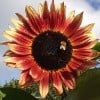Some common wild mammals found in Great Britain
Great Britain is not a country with which wild mammals are usually associated, and it may not have anything dramatic like big cats or bears, but it does have a rich and diverse fauna of its own. This article will introduce you to a few of the more common wild mammals that can be found in Britain.
Although it is now an island nation, Britain was once joined to mainland Europe, and so shares many mammal species with the rest of the continent. However, it has been separated by the English Channel for many thousands of years now, so some species such as bears and wolves have become extinct in Britain due to hunting or loss of habitat. Wild boar, which had been hunted to extinction hundreds of years ago, have made a comeback in some places, after escaping into the wild from farms. Some other mammal species have been introduced to Britain and have now become naturalised, such as grey squirrels, goats, and sika deer.
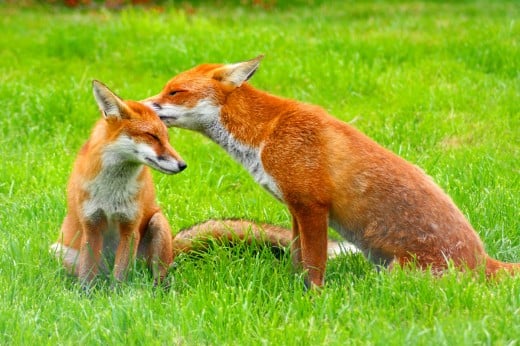
The Red Fox
The red fox (Vulpes vulpes) is a fairly common sight in both towns and the countryside of Great Britain, as well as most of Europe, America, Asia and Africa. The fox is a small member of the dog family, with a lovely rusty red or brown fur coat, often with white markings on the chest. It is a very adaptive animal, coping well in a variety of environments, and will eat almost anything that it can hunt or scavenge. Urban foxes are often quite tame, and are very resourceful, making good use of people's rubbish. In the countryside the fox is often viewed as the farmer's enemy, as they sometimes steal chickens or even young lambs.
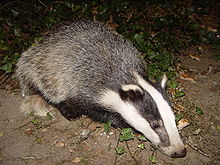
The European Badger
Badgers (Meles meles) are another common mammal in Great Britain, although they are not seen very often, being mainly nocturnal. They have a distinctive black and white striped fur, with a long dog-like nose, and are quite large stocky animals with short legs. They belong to the weasel family (mustelidae) and are omnivorous, living mainly on a diet of small mammals, slugs, snails, grubs and vegetation.
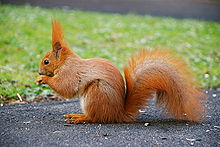
The Red Squirrel
The red squirrel (Sciurus vulgaris) is the native squirrel of Great Britain, and is now a protected species because it has disappeared from much of the country due to both loss of habitat and because it has been out-competed by the grey squirrel, which was introduced to Britain in the late 19th century. It is now only found in and around forested areas of Northern England and Scotland, as well as isolated pockets such as Brownsea Island on the coast of Dorset. It's favourite food is the cone of the Scot's Pine tree.
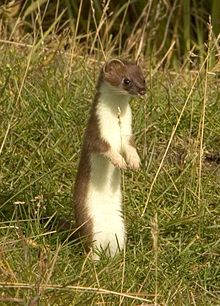
Stoats and weasels
Stoats and weasels are members of the mustelid family, and look fairly similar to each other. About two feet in length with short legs and long tails, they are a mid to reddish brown colour. The stoat differs in having a white chest, and by having a white winter coat, which is known as ermine. They feed on small mammals, birds eggs and grubs.
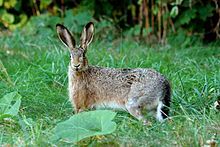
Hares and rabbits
Hares are native to the UK and are much rarer than their smaller cousins, the rabbits.Hares can sometimes be seen leaping about madly and engaging in boxing matches during the mating season in the spring, giving rise to the expression "as mad as a March hare".
Rabbits were introduced to the UK by the Normans in the 11th century, when they were farmed for food. Rabbits are now one of the most common British mammals, despite nearly being wiped out in the 1950s by myxomatosis, a nasty and fatal disease affecting rabbits, which was often spread deliberately by people wanting to control the local rabbit population.
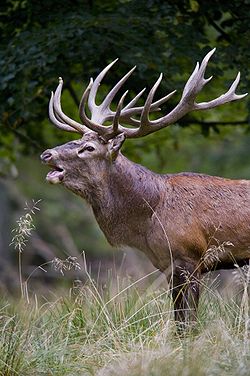
The largest ...
There are six species of deer in Great Britain, including fallow deer, roe deer, muntjac, Chinese water deer, sika and red deer.
Red deer (Cervus elaphus) are the largest wild mammals in the country, with stags measuring around 2 metres in height. Wild populations live in the highlands of Scotland, as well as the Lake District and Exmoor in England.
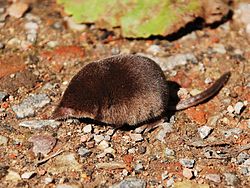
... and the smallest
The pygmy shrew (Sorex minutus) is the smallest mammal to be found in Great Britain. It is a tiny insectivorous mammal, with a pointed nose and a long tail and is often found amongst leaf litter and undergrowth where it forages for small insects and invertebrates. An adult weighs as little as 4 grams.
